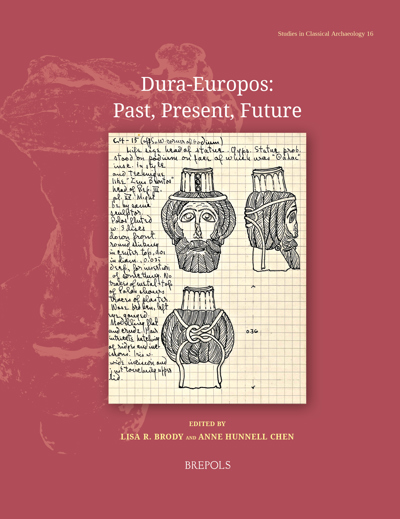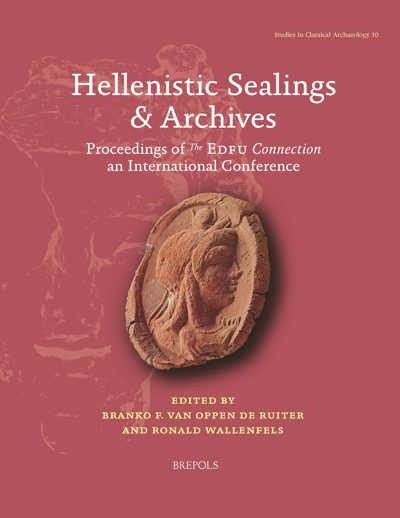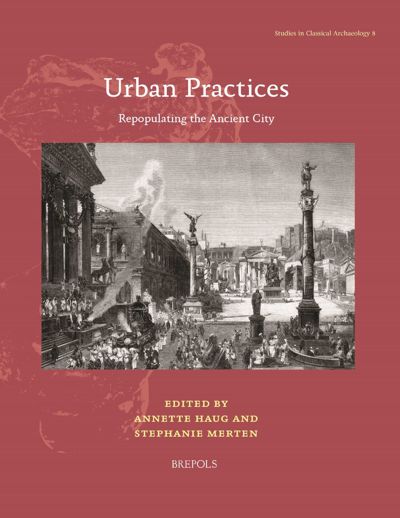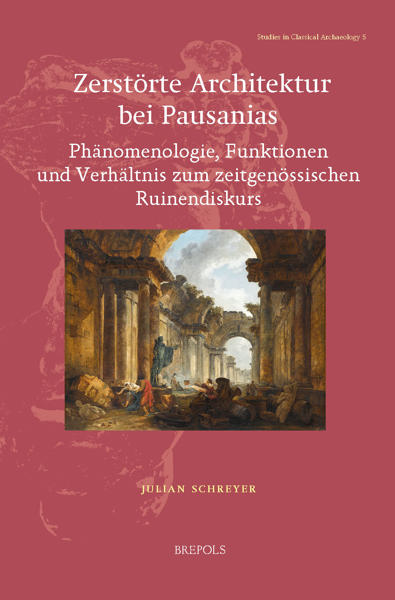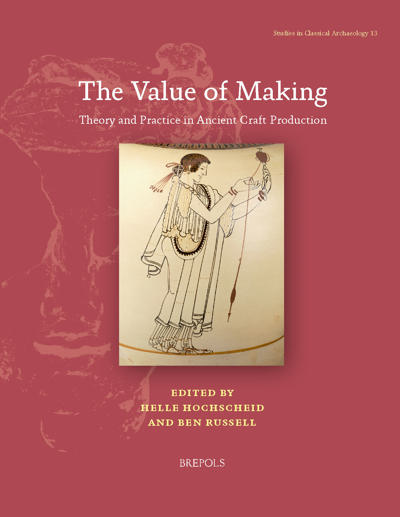
Dura-Europos: Past, Present, Future
Lisa Brody, Anne Hunnell Chen (eds)
- Pages: xvi + 245 p.
- Size:216 x 280 mm
- Illustrations:33 b/w, 53 col., 2 tables b/w.
- Language(s):English, Arabic
- Publication Year:2025
- € 110,00 EXCL. VAT RETAIL PRICE
- ISBN: 978-2-503-61604-9
- Paperback
- Temporarily Out of Stock
- ISBN: 978-2-503-61605-6
- E-book
- Available
Proceedings from an international conference on the ancient city of Dura-Europos (Syria) held at Yale University in 2022, with papers that explore its cultural heritage through multidisciplinary research approaches.
Lisa R. Brody (lisa.brody@yale.edu) is the Associate Curator of Ancient Art at the Yale University Art Gallery. A Classical archaeologist with extensive excavation experience, her exhibitions at the Yale University Art Gallery include Dura-Europos: Crossroads of Antiquity and Roman in the Provinces: Art on the Periphery of Empire. Her recent research focuses on Dura-Europos, Palmyra, Gerasa, and the connections among cultures in the Roman East.
Anne Hunnell Chen (achen@bard.edu) is an Assistant Professor of Art History and Experimental Humanities at Bard College. She is the founder and co-director of the International (Digital) Dura-Europos Archive (IDEA), an ongoing digital humanities initiative funded by the National Endowment for the Humanities. She has published on Roman, Persian, and Digital Humanities topics.
This volume brings together an international and interdisciplinary host of scholars to reflect on the complicated legacies of exploration at the archaeological site of Dura-Europos, situated on the western bank of the Euphrates River near modern Salihiyeh (Syria). A chance discovery after World War I kicked off a series of excavations that would span the next century and whose finds are today housed in collections worldwide, including the Yale University Art Gallery, the Louvre, and the National Museum in Damascus. Dura-Europos exemplifies a multiethnic frontier town at the crossroads of major trade routes. Its textual remains and remarkably-preserved Christian, Jewish, and polytheist religious sanctuaries provide key resources for the study of antiquity and attest to the cross-cultural interconnectivity that was demonstrably central to the ancient world but which has been too often obscured by Eurocentric historiographic traditions and siloed disciplinary divisions.
Foreign-run, large-scale archaeological campaigns of the early twentieth century, like those at Dura-Europos, have created narratives of power and privilege that often exclude local communities. The significance of these imbalances is entangled with the destruction the site has experienced since the 2011 outbreak of conflict in Syria. As a step toward making knowledge descendant of early excavations more accessible, this volume includes Arabic summaries of each paper, following up on the simultaneous Arabic interpretation provided at the 2022 hybrid conference whose proceedings form the core of this publication. The papers address topics connected to essential themes in relation to Dura-Europos: long-distance trade relations and cross-border interactions in antiquity, including the exchange of technologies, people, and materials; Christianity, Judaism, and other religious practices, and their relations to one another; contemporary trafficking of looted artifacts; cultural heritage and the Islamic State; and the evolving role of museum collections, technologies, and archival materials for research.
Table of Contents
List of Illustrations
List of Contributors
1. Introduction
Lisa R. Brody, and Anne Hunell Chen
2. Rostovtzeff’s Dura
Jaś Elsner
3. ‘Dura and the Problem of Parthian Art’ (almost) a Hundred Years Later
Henry P. Colburn
4. The Bloody Genesis of Dura-Europos Studies: Archaeology, Colonialism, and Violence at Salhiyeh, 1916–1920 and Beyond
Simon James
5. The So-Called Semitic Population of the Roman Near East with Special Reference to Dura-Europos
Kevin van Bladel
6. A Few Notes on Parthian Dura-Europos
Leonardo Gregoratti
7. Monuments and Memory at Dura-Europos
Ted Kaizer
8. The Bone Dolls from Dura-Europos: Embodying Childhood Experience
Juliet Samson-Conlon
9. Touching and Inscribing the Dura- Europos Synagogue
Karen Stern
10. New Trends in Mithraic Studies: Experiencing the Dura-Europos Mithraeum
Lucinda Dirven
11. Staying at Home or Taking Away: Palmyrene Priestly Iconography as Expressions of Local Religious Traditions and Societal Status
Rubina Raja
Arabic abstract
12. Military Communities from East to West: Understanding Local Contexts and Responses at Dura-Europos and Vindolanda
Elizabeth M. Greene, and Craig A. Harvey
13. The Ruins that Remain: Remembering Dura-Europos in Salhiyeh
J. A. Baird, and Adnan Almohamad with Asaad Alsaleh
14. The Pillaging of Dura-Europos: ISIS and the Illicit Trade in Antiquities
Amr Al Azm
15. A Legal Framework for Protecting Heritage Against Destruction and Looting
Leila A. Amineddoleh
